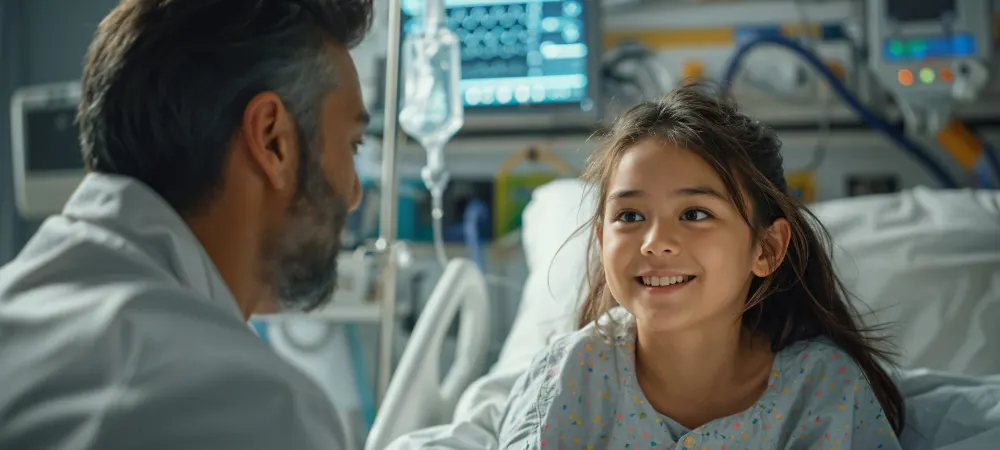When parents first hear that their baby has gastroshiza, the fear can feel overwhelming. Questions about survival, recovery, and the long-term future immediately come to mind. The good news is that with modern medical care, most children born with gastroshiza can go on to live healthy, fulfilling lives. Still, the journey from diagnosis to recovery often comes with unique challenges. In this article, we will explore what families can expect, the possible complications, and how children with gastroshiza can thrive as they grow.
Understanding Gastroshiza
Gastroshiza is a birth condition where a baby is born with the intestines outside the abdomen due to a small opening in the abdominal wall. Unlike some other abdominal wall defects, gastroshiza usually occurs without a protective sac around the intestines, leaving them exposed to amniotic fluid during pregnancy.
While surgery after birth can repair the abdominal wall and return the intestines inside, the condition can temporarily affect how the digestive system functions. This is why parents often wonder how it might influence their child’s long-term life.
Survival Rates and Early Outcomes
Thanks to medical advancements, survival rates for babies born with gastroshiza are now very high, especially for those with the “simple” form where only the intestines are involved. Most newborns recover well after surgery and spend several weeks to months in a neonatal intensive care unit (NICU).
Complex cases, where the intestines are damaged or other organs are affected, may require longer hospital stays and additional procedures. While this can delay recovery, even children with complex gastroshiza have a good chance of reaching a stable and healthy life with proper care.
Can Children Eat Normally After Recovery?
One of the biggest concerns parents have is whether their child will be able to eat and digest food normally.
Short-term feeding challenges
In the early weeks, babies often need intravenous nutrition or tube feeding until their intestines begin working properly. Transitioning to oral feeding can take time, but with patience and structured feeding plans, most infants eventually tolerate breast milk or formula.
Long-term feeding outlook
Once the intestines adapt, the majority of children eat normally without restrictions. Some may experience mild digestive sensitivities or occasional reflux, but these usually improve with age. Only a small number of children with severe complications may require long-term nutritional support.
Growth and Development
Children born with gastroshiza may start out smaller than average because of the condition and the challenges of early nutrition. However, many catch up in growth within the first few years of life.
Pediatricians closely monitor:
- Weight gain and height progression
- Digestive tolerance (ability to handle solid foods)
- Overall development milestones such as walking, talking, and learning
In most cases, children with gastroshiza grow at a normal pace once feeding and digestion stabilize.
Long-Term Health Considerations
While most children live healthy lives, there are a few things parents should be aware of:
Possible complications
- Bowel obstructions: Scar tissue or twisting of the intestines can sometimes cause blockages later in life.
- Digestive issues: Some children may experience constipation, diarrhea, or food sensitivities, especially in early years.
- Hernias: Weakness in the abdominal wall can sometimes lead to hernias that may require repair.
Follow-up care
Regular checkups with pediatricians and, in some cases, gastroenterologists or surgeons help track progress and address concerns early.
Emotional and Social Well-being
Beyond physical health, parents often wonder if their child will feel “different” growing up. The reality is that most children with gastroshiza lead active, normal lives. They go to school, play sports, make friends, and pursue their interests just like any other child.
Parents can help by:
- Encouraging normal activities without overprotecting.
- Explaining the condition in simple terms when the child is old enough to understand.
- Building self-confidence by celebrating milestones and achievements.
Can Gastroshiza Affect Life Expectancy?
For the majority of children, life expectancy is not affected by gastroshiza. Once the abdominal wall is repaired and the intestines recover, children can expect to live full lives. Long-term outcomes largely depend on whether the case was simple or complex and whether additional medical issues were present.
Tips for Parents Supporting Their Child
- Stay informed: Learn about the condition and ask your healthcare team about any concerns.
- Be patient with recovery: Feeding and growth may take time, but steady progress is normal.
- Focus on milestones: Celebrate small victories, from first successful feeds to growth improvements.
- Encourage independence: Let your child explore and engage in activities just like other kids.
- Seek support when needed: Parent support groups and counseling can help families manage stress.
Stories of Hope
Many children born with gastroshiza go on to thrive in sports, academics, and everyday life. Parents often share stories of their children living with no restrictions, attending school like their peers, and achieving their dreams. While the beginning may feel daunting, these real-life experiences offer reassurance that gastroshiza does not define a child’s future.
Final Thoughts
So, can children with gastroshiza live a normal life? The answer is yes—most can. While the journey involves challenges in the first weeks or months of life, modern medical care ensures high survival rates and strong long-term outcomes. With proper nutrition, ongoing monitoring, and a supportive family environment, children born with gastroshiza can grow up healthy, active, and happy.
For parents, knowing that a normal life is possible brings peace of mind. The early struggles give way to milestones, and before long, many families look back at gastroshiza as just the beginning of a much brighter story.


